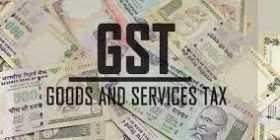If the government is to be believed, demonetisation has not been a failure, despite the return of 99 per cent of the banned notes. They still claim it has been a success.
Finance Minister Arun Jaitley, speaking on the day the Reserve Bank of India or RBI released data showing only 1 per cent of the cash did not end up with the banks, said, “The real objects of demonetisation were formalisation (of the economy), attack on black money, less-cash economy, bigger tax base, digitisation, a blow to terrorism.”
We fact-checked one set of those claims – on digitisation, the widening of the tax base and fake currency – here, to find they do not add up.
Even the remaining benefits of the notes ban do not quite stand the test of scrutiny.
Data from 10 months before the notes ban (January-November 2016) and the 10 months after shows a 38 per cent rise in the number of terrorist incidents in Jammu and Kashmir. The number of security personnel killed has risen by 2 per cent.
In Naxal-affected states, terror incidents are down 45 per cent but the number of security personnel killed is up a whopping 82 per cent, according to data from the South Asia Terrorism Portal or SATP.
It’s also unclear how the government has spoken of a greater formalisation of the economy, thanks to the notes ban. No data has been released so far to back that claim.
The only data point we could find was the National Sample Survey or NSSO of 2012, which found that India’s informal sector was shrinking well before the notes ban, employing 72 per cent of workers in 2011-12 compared with 78 per cent in 2004-05.
Separately, economists say that the one benchmark to measure the scale of the formal economy is by assessing Gross Domestic Product or GDP numbers, which takes into account, amongst other factors, business performance of companies filed by them in government records.
If GDP was to rise, for instance, it would show the formal economy is increasing. But as this week’s numbers show, GDP has fallen to 5.7 per cent in the latest quarter, the lowest in 13 quarters.
The claim of using demonetisation to reduce cash is another measure whose benefits are unclear, as is the claim itself.
India, government officials say, has a very high amount of cash in circulation in comparison to its GDP – known as cash-to-GDP ratio, which in turn, they argue fosters corruption.
The RBI says that thanks to demonetisation, cash in circulation or CIC has fallen from 12.2 per cent of India’s GDP in March 2016, to 8.8 per cent by end-March 2017, “comparing well with a host of advanced and emerging market economies (such as Germany, France, Italy, Thailand and Malaysia).”
But economists are not convinced whether a lower cash-to-GDP ratio in itself will lead to a cleaner economy. According to an analysis by Bloomberg Quint, “It is difficult to conclude whether a lower CIC-to-GDP ratio is a sign of a more developed or structurally evolved economy. If it is, then how does one explain countries such as Japan, Hong Kong, Switzerland having ratios which are either higher or comparable to that of India?” Japan, the report mentions, has a ratio of 19.4 per cent, Hong Kong 15 per cent and Switzerland 11 per cent, all higher than India.
Moreover, while it’s true that the overall currency in circulation has fallen since demonetisation — down by 13 per cent since the notes ban was enforced — falling from Rs. 17.97 lakh crores in November 2016, to approximately Rs. 15 lakh crores in August this year, that trend is changing.
An examination of the three-month average pace at which cash is re-entering the system suggests that within about two months, levels of cash in circulation will be almost back to pre-demonetisation levels.




Leave a reply